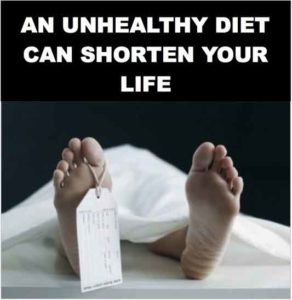 New research suggests graphic warnings on junk food packaging would prove an effective deterrent to consumers when deciding what to eat: just like warnings on cigarette packaging, when it comes to junk food – the more graphic and negative the message the better.
New research suggests graphic warnings on junk food packaging would prove an effective deterrent to consumers when deciding what to eat: just like warnings on cigarette packaging, when it comes to junk food – the more graphic and negative the message the better.
The finding by researchers at the University of Melbourne and Cancer Council Victoria reinforces arguments for mandatory health warnings on unhealthy food as an effective tool in improving diets and combatting rising rates of obesity-related chronic diseases.
In the study, 95 hungry participants were shown colour pictures of 50 different snack foods ranging from chips, chocolate bars and biscuits to nuts, fruits and vegetables.
They were asked to rate on a scale how much they would like to eat each food at the end of the experiment.
A growing body of evidence suggests that food cue exposure activates conditioned appetitive physiological and psychological responses that may override current metabolic needs and existing eating goals, such as the desire to maintain a healthy diet.
This conditioned response results in unhealthy dietary choices and is a contributing factor in the current obesity epidemic.
The new study examined the effects of text-only and text-and-graphic, negatively and positively framed health warnings on dietary choice behavior.
In a 2 × 5 mixed experimental design, 96 participants completed a dietary self-control task.
The research found negative text combined with images was twice as effective at changing people’s choices than messages that had negative text-only content or those with images combined with positive text.
In addition, participants’ brain activity was monitored with electrodes attached to their heads.
The study found warning labels prompted participants to exercise more self-control rather than act on impulse.
University of Melbourne researcher and study co-author Stefan Bode said: “The study shows that if you want to stop people choosing fatty and sugary packaged foods, health warnings actually work.
“It sheds light on the mechanisms in the brain that underlie the effects of health warning messages on food processing.”
See also
Ultra-processed foods cause overeating and weight gain, NIH study finds (2019-06-24)
Link…
The food ingredient Propionate linked with obesity and diabetes (2019-05-17)
Link…
Good exercise habits derailed by common food additive (2019-01-18)
Link…
Your brain anatomy predicts your food choices (2018-10-08)
Link…
Nitrated meat products are associated with manic episodes in humans (2018-08-16)
Link…
EU criteria fall short of protecting public from endocrine disrupting chemicals (2018-06-27)
Link…
For more infromation
Food product health warnings promote dietary self-control through reductions in neural signals indexing food cue reactivity
Link…
Appetite
Health warnings promote healthier dietary decision making: Effects of positive versus negative message framing and graphic versus text-based warnings
Link…
University of Melbourne
Link…
Cancer Council Victoria
Link…
MDN
This post is also available in:
 Italian
Italian


